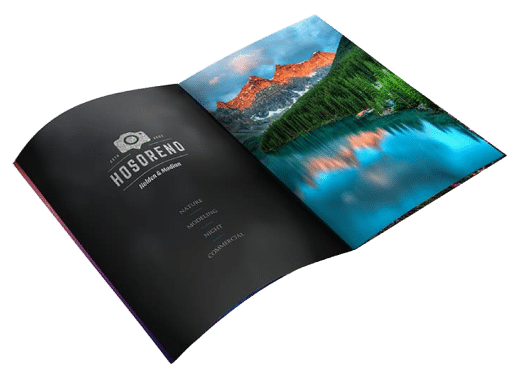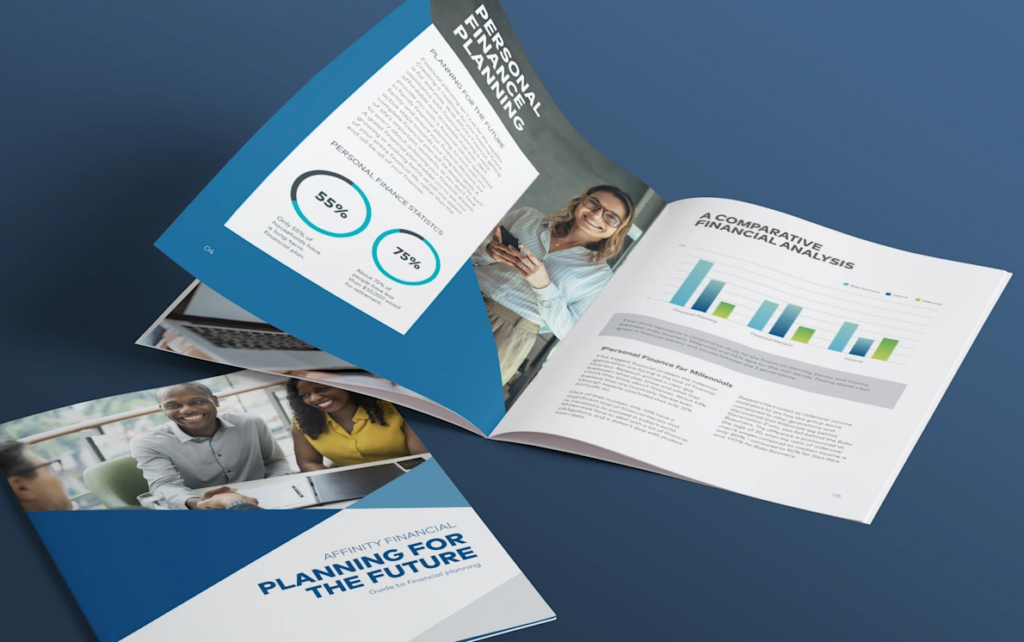The Top 5 Benefits of Modern Booklet Printing Techniques
The Top 5 Benefits of Modern Booklet Printing Techniques
Blog Article
The Vital Guide to Understanding Pamphlet Printing Options and Techniques
The procedure of brochure printing involves multiple factors to consider that can considerably affect the final item. From choosing the suitable layout and dimension to understanding the subtleties of binding approaches, each option plays an important role. In addition, aspects such as paper stock and printing strategies additional influence the performance of the pamphlet. As one navigates these options, it comes to be critical to comprehend how they adjoin and what that implies for the overall result.
Understanding Pamphlet Sizes and formats
When taking into consideration pamphlet printing, understanding the various layouts and sizes readily available is vital for achieving the preferred presentation. Brochures can be generated in many layouts, including saddle-stitched, spiral-bound, and perfect-bound, each offering distinctive advantages. Typical dimensions range from typical letter (8.5 x 11 inches) to smaller alternatives like A5 (5.8 x 8.3 inches), permitting adaptability based on web content and target audience.Selecting the appropriate dimension can affect both the layout and visitor involvement. Larger sizes could match visually driven material, while smaller sized formats may be a lot more easy to use and mobile. In addition, the number of pages impacts the selection of binding method, as thicker booklets may need tougher bindings. Inevitably, understanding these elements enables for an extra customized approach, guaranteeing that the final item lines up with the desired message and visual, boosting the total effectiveness of the communication.
Choosing the Right Paper Stock

Binding Techniques: Alternatives and Considerations
When it involves binding methods for pamphlets, numerous alternatives are available, each with unique benefits. Saddle stitch binding supplies an affordable option for thinner pamphlets, while excellent binding techniques offer a more refined search for thicker publications. Wire-O binding attracts attention for its toughness and convenience of use, making it perfect for papers that need adaptability.
Saddle Stitch Binding
Saddle stitch binding supplies a affordable and useful option for setting up brochures, making it a popular choice amongst authors and businesses. This binding approach entails folding sheets of paper in fifty percent and stapling them along the fold line, producing a cool and orderly appearance. Typically ideal for pamphlets with a reduced page count, saddle stitching is ideal for publications, sales brochures, and training materials. The simplicity of this strategy permits for quick production and is often preferred for brief runs or marketing items. However, it is essential to keep in mind that saddle stitch binding might not appropriate for thicker booklets, as the back may not stand up under boosted weight. Generally, it stays a reliable alternative for numerous printing projects.
Perfect Binding Methods
Perfect binding is a widely used strategy that offers a professional and refined finish to publications and pamphlets. This technique involves gluing the web pages with each other at the spine making use of a solid adhesive, permitting for a clean edge and the capability to hold a larger number of pages contrasted to saddle stitching. Perfect binding is especially suitable for thicker brochures, such as catalogs and yearly reports, where a tough, level spinal column is desired. Furthermore, it supplies the alternative for a published cover that can be created to boost visual appeal. Considerations such as web page count, paper weight, and the planned usage of the pamphlet need to be taken into account, as they can affect sturdiness and total top quality.
Wire-O Binding Alternatives
Wire-O binding, known for its sturdiness and flexibility, uses an outstanding choice for pamphlets that need very easy web page transforming and a professional appearance. This binding approach employs a series of steel loopholes that hold web pages securely, enabling them to exist flat when open. It is particularly suitable for handbooks, presentations, and catalogs as a result of its durable nature. Wire-O binding is readily available in numerous colors and sizes, accommodating various web page matters and thicknesses. In addition, it permits the addition of tabs and covers, boosting the booklet's general aesthetic. Factors to consider for Wire-O binding include the selection of wire color, the dimension of the loops, and the degree of customization desired, every one of which can greatly influence the final item's appearance and capability.
Digital vs. Offset Printing: Which Is Best for You?
When selecting a printing technique for booklets, understanding the distinctions between electronic and balance out printing is vital. Digital printing uses modern-day innovation to generate premium prints swiftly and cost effectively, making it optimal for short runs or projects needing fast turn-around times. It allows for modification, providing the capacity to print on-demand with minimal waste.In comparison, counter printing is a conventional approach that succeeds Resources in creating big quantities with constant high quality. It includes transferring ink from a plate to a rubber blanket, then to the paper, which leads to vibrant colors and accurate details. Balance out printing commonly requires longer setup times and is more affordable for bigger volumes.Ultimately, the selection in between digital and offset printing depends on job demands, budget plan, and wanted amount. For small, time-sensitive tasks, digital may be the very best selection, while offset might be preferable for bigger, top notch productions.

Designing Your Brochure: Tips and Ideal Practices
When making a brochure, mindful attention to design, typeface selection, and shade use can substantially enhance its performance. A well-structured design guides the visitor's eye, while suitable font styles ensure readability and communicate the preferred tone. Additionally, effective use shade can evoke feelings and emphasize essential details, making the general style more impactful.
Selecting the Right Layout
Just how can one properly pick the ideal layout for a brochure? Initially, it is vital to examine the booklet's purpose and target market. A tidy, organized layout boosts readability and engagement. Using a grid system can help in lining up components continually, creating a professional appearance. In addition, including aesthetic power structure with differing sizes and positionings of photos and message can assist the reader's eye and highlight essential info. It is also important to leave sufficient white room, which avoids overcrowding and permits better emphasis. Lastly, checking various layouts via mock-ups can give insight right into how the design does in real-world circumstances, ensuring that the final product satisfies both useful and aesthetic needs.
Choosing Proper Typefaces
An appropriate typeface can greatly enhance the overall design of a booklet, matching the design and strengthening the material's message. The choice of font styles ought to think about readability, particularly for body text, as it ensures the info is easily accessible to all visitors. Sans-serif font styles are typically liked for digital styles, while serif fonts can lend a traditional feeling in published products. It's a good idea to limit font choices to two or 3 to keep visual coherence. Additionally, typeface dimension plays a crucial function; headings should be not frustrating but distinct, while body message must be comfortable for reading. When picking font styles, alignment with the pamphlet's motif and target audience is important for reliable interaction and aesthetic allure.
Efficient Use Shade
Shade acts as an effective tool in pamphlet design, directing and forming perceptions viewers emotions. It can stimulate sensations of depend on, excitement, or peace, depending upon the hues chosen. Developers need to think about shade concept principles, making certain that the chosen combination straightens with the booklet's message and target audience. Making use of cozy colors like red and orange can create urgency, while cooler tones like blue and eco-friendly foster tranquility.Additionally, comparison plays an essential role; complementary colors can enhance readability and visual appeal. Consistency in color usage across pages even more enhances brand identity and cohesion. Eventually, efficient color implementation not only captures attention but also reinforces the booklet's purpose, making it a vital element of successful design.
Finishing Touches: Coatings and Unique Results
While several take into consideration the web content and design of a brochure the most crucial elements, the finishing touches, such as coatings and unique results, play a necessary function in boosting its total charm. Coatings can offer protection and resilience, ensuring that the booklet endures wear and tear. Matte surfaces provide a sophisticated, non-reflective surface area, while glossy finishes can make colors show up more dynamic and appealing. Unique results, like embossing or foil marking, include a tactile measurement that can develop a remarkable impact. These methods can highlight certain locations, accentuating crucial details or developing aesthetic passion. Additionally, UV finishing can provide a high-shine finish that elevates the general look.Together, these finishing touches not just boost the that site pamphlet's aesthetic but additionally communicate professionalism and interest to information, ultimately leaving an enduring effect on the reader.
Cost Factors To Consider for Pamphlet Printing
Comprehending the numerous price factors to consider for booklet printing is necessary for organizations and organizations intending to maximize their spending plans. Trick aspects influencing expenses consist of the option of ink, binding, and paper methods. Better products, such as superior paper or specialized inks, generally increase the overall cost. Additionally, the dimension and page count of the pamphlet play a significant function; bigger pamphlets need even more sources and time to produce.Another essential factor to consider is the printing method, whether electronic or balanced out, as each has its very Read More Here own rates framework and suitability for various amounts. Organizations need to likewise consider design prices, which can differ based upon complexity and making use of specialist services. Inevitably, shipping and handling fees can add to the overall, especially for big orders. By assessing these aspects, organizations can make enlightened choices that line up with their monetary abilities while attaining the preferred top quality in their printed products.
Regularly Asked Questions
What Are the Environmental Impacts of Pamphlet Printing?
The ecological effects of booklet printing include logging from paper production, carbon exhausts from transport, and waste generation from discarded materials - Booklet Printing. Lasting techniques, such as making use of recycled paper and environment-friendly inks, can reduce these results
How Can I Ensure Color Accuracy in My Brochure?
To guarantee shade accuracy in a pamphlet, one must use adjusted monitors, use expert shade profiles, perform examination prints, and choose high-grade printing services that supply shade matching and proofing alternatives for best results.
What Is the Regular Turnaround Time for Pamphlet Printing?
The regular turn-around time for pamphlet printing varies depending on the intricacy and quantity - Booklet Printing. Typically, it ranges from a few days to two weeks, affected by variables such as publishing approaches and finishing requirements
Exist Minimum Order Quantities for Booklet Printing?

Can I Publish Pamphlets in Multiple Languages?
Printing brochures in numerous languages is feasible. Numerous printing services use options for multilingual or multilingual layouts, permitting efficient communication. Careful planning warranties that make aspects accommodate numerous languages without compromising readability or looks. Furthermore, factors such as paper stock and printing strategies more influence the effectiveness of the booklet. When taking into consideration booklet printing, recognizing the various layouts and dimensions readily available is essential for achieving the preferred discussion. When selecting a printing technique for booklets, comprehending the differences in between electronic and offset printing is essential. Additionally, the dimension and page count of the brochure play a substantial role; bigger brochures call for more sources and time to produce.Another vital consideration is the printing technique, whether digital or balanced out, as each has its very own rates structure and suitability for different quantities. The ecological influences of pamphlet printing include logging from paper manufacturing, carbon discharges from transport, and waste generation from disposed of products.
Report this page